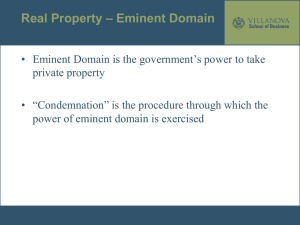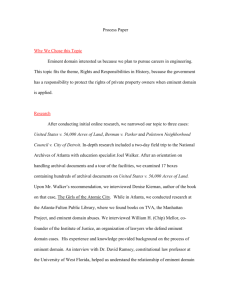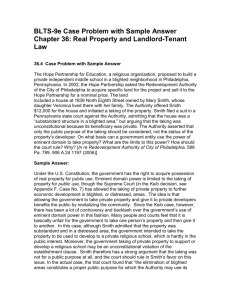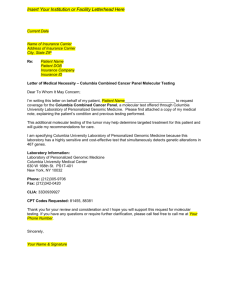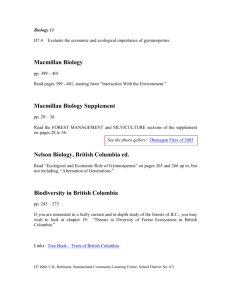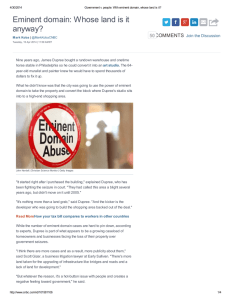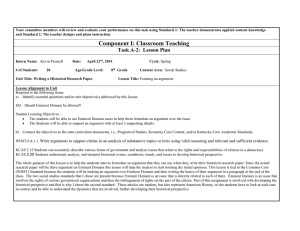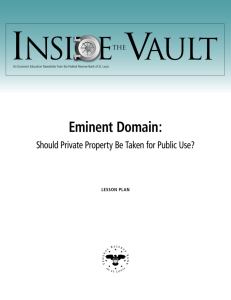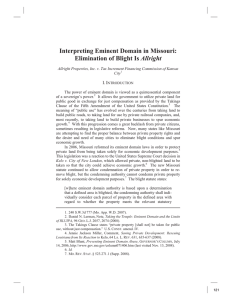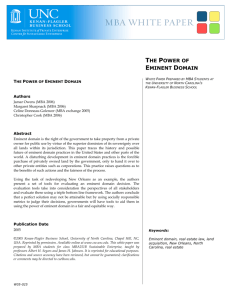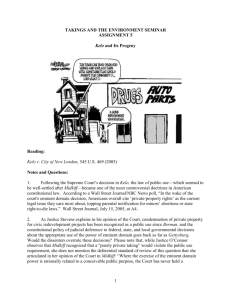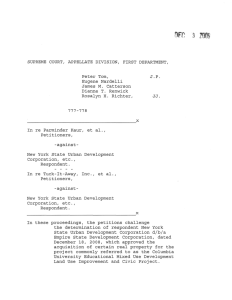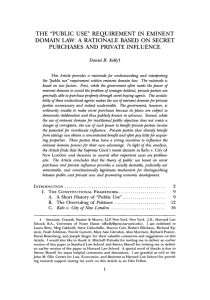What is eminent domain
advertisement
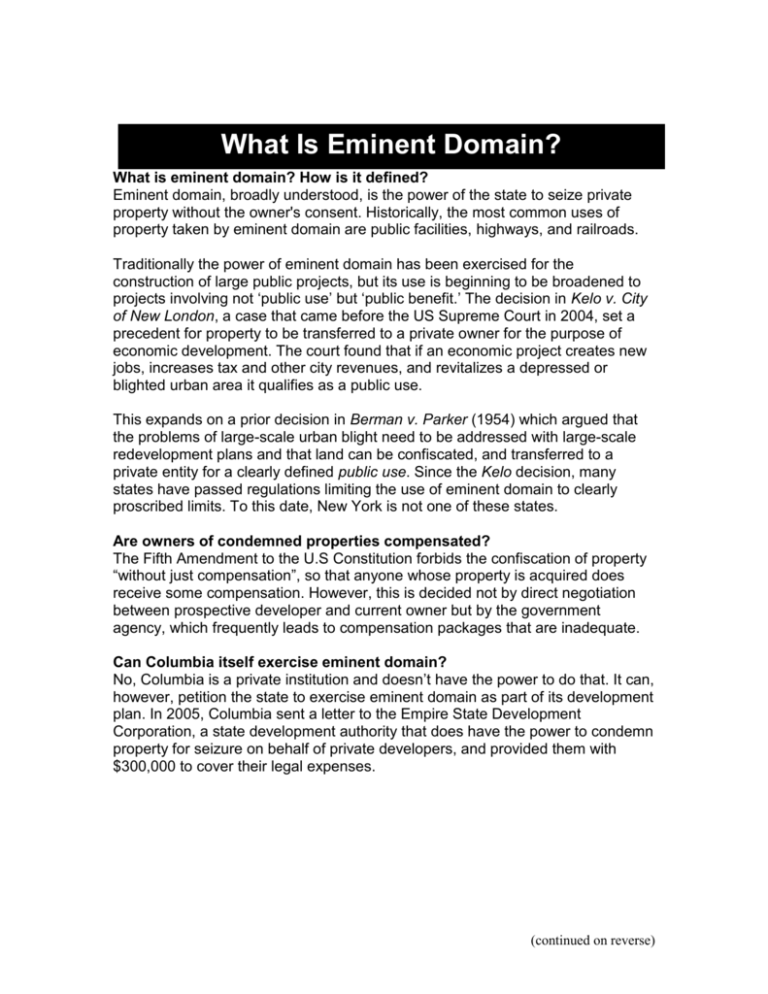
What Is Eminent Domain? What is eminent domain? How is it defined? Eminent domain, broadly understood, is the power of the state to seize private property without the owner's consent. Historically, the most common uses of property taken by eminent domain are public facilities, highways, and railroads. Traditionally the power of eminent domain has been exercised for the construction of large public projects, but its use is beginning to be broadened to projects involving not ‘public use’ but ‘public benefit.’ The decision in Kelo v. City of New London, a case that came before the US Supreme Court in 2004, set a precedent for property to be transferred to a private owner for the purpose of economic development. The court found that if an economic project creates new jobs, increases tax and other city revenues, and revitalizes a depressed or blighted urban area it qualifies as a public use. This expands on a prior decision in Berman v. Parker (1954) which argued that the problems of large-scale urban blight need to be addressed with large-scale redevelopment plans and that land can be confiscated, and transferred to a private entity for a clearly defined public use. Since the Kelo decision, many states have passed regulations limiting the use of eminent domain to clearly proscribed limits. To this date, New York is not one of these states. Are owners of condemned properties compensated? The Fifth Amendment to the U.S Constitution forbids the confiscation of property “without just compensation”, so that anyone whose property is acquired does receive some compensation. However, this is decided not by direct negotiation between prospective developer and current owner but by the government agency, which frequently leads to compensation packages that are inadequate. Can Columbia itself exercise eminent domain? No, Columbia is a private institution and doesn’t have the power to do that. It can, however, petition the state to exercise eminent domain as part of its development plan. In 2005, Columbia sent a letter to the Empire State Development Corporation, a state development authority that does have the power to condemn property for seizure on behalf of private developers, and provided them with $300,000 to cover their legal expenses. (continued on reverse) What is wrong with eminent domain? Is it wrong for Columbia to claim to be negotiating with the community while reserving the right to ask the state to forcibly remove them? Any honest negotiations have to be based on a spirit of compromise and mutual respect, not on the threat of force. It is difficult to imagine Columbia agreeing a comprehensive benefits agreement when it can walk away from the table and remove people by force. Community residents have consistently asked the West Harlem Local Development Corporation, the body responsible for negotiations with the University, to make the prohibition of eminent domain a precondition for any talks with Columbia. Community Board 9, the governing body for the Manhattanville and Morningside Heights area, unanimously passed a resolution calling for the same. Columbia has disregarded the opinions of these community bodies. Community residents argue that the University has unfairly demonized local business-owners as “profit-seeking outsiders” despite the fact that they have worked in the community for generations and are active participants in CB9 and other community organizations. This is seen as a divide-and-conquer tactic that would allow Columbia to pave the way for the use of eminent domain with provoking political outcry from local residents and politicians. Columbia proposed and funded a blight survey in Manhattanville (to be conducted through NY State as a precondition for the use of eminent domain), in order to acquire the building rights for sub-grade properties within their proposed development area. What is disturbing about this is that Columbia itself owns 60% of the land involved in the blight determination and controls more than 80%, including all the vacant properties, open lots, properties in disrepair, and inadequately secured or ill-maintained property in the area that could be cited as a basis to find the area blighted. Thus, CU has certainly played a role in stifling the neighborhood’s economic development and engendering any blight that has occurred there, particularly since blight would have been a false characterization of the neighborhood before CU began buying property in the area in 2000. Though the blight survey has yet to be completed, the Columbia Spectator was able to obtain (through a FOIA request) a copy of CU’s General Project Plan, which presumes a blight finding in the study. Community Board 9 Chair Jordi Reyes-Montblanc has called Columbia’s presumptuousness in this regard “beneath contempt”, and has vowed that any declaration of blight will be challenged with a lawsuit. Eminent domain is only justified if the development in question is deemed to be for a ‘public use.’ The ever-broadening definition of “public use” implied in Columbia’s pursuit of eminent domain sets a dangerous precedent in which land could be transferred to any high-profile developer with political connections. (continued on reverse) (Properties in white represent non-Columbia properties that want to remain) (continued on reverse)
